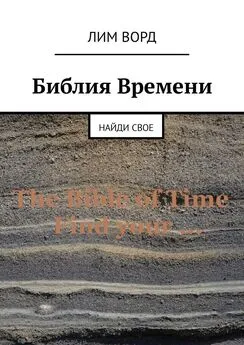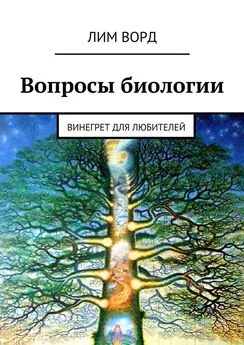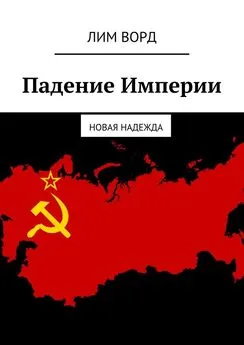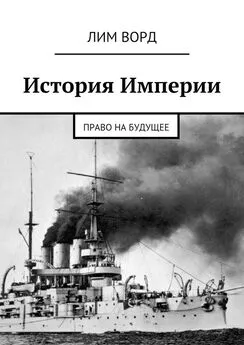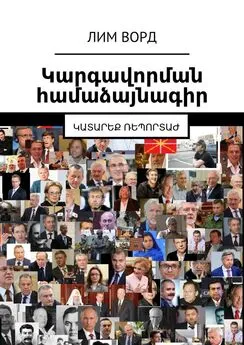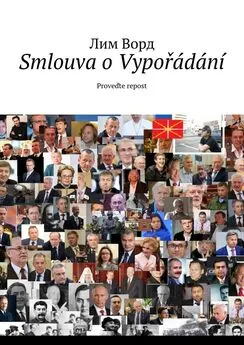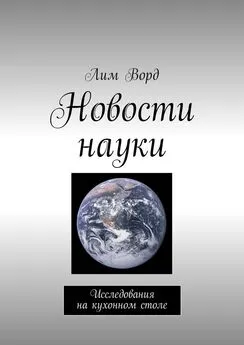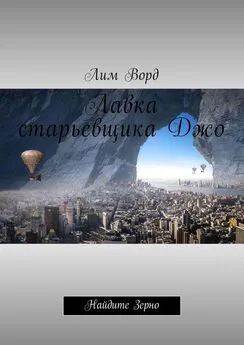Лим Ворд - Библия Времени. Найди свое
- Название:Библия Времени. Найди свое
- Автор:
- Жанр:
- Издательство:неизвестно
- Год:неизвестен
- ISBN:9785449318695
- Рейтинг:
- Избранное:Добавить в избранное
-
Отзывы:
-
Ваша оценка:
Лим Ворд - Библия Времени. Найди свое краткое содержание
Библия Времени. Найди свое - читать онлайн бесплатно ознакомительный отрывок
Интервал:
Закладка:
By the beginning of the Russian campaign, the army of Karl reached 120 thousand people, of which 38 thousand – the army of the invasion. The number of regular forces of Peter is 200 thousand people and, in addition, 100 thousand in irregular troops of Cossacks, and Asian nationalities. Defense spending amounts to 78% of the budget, the entire country is militarized, grain is taken to the cities, they are declared fortresses. The Moscow Kremlin once again becomes a full-fledged stronghold, bastions are built on it, the ditches, dried from the seventeenth century, are filled with water from the Neglinka River.
The campaign of the Swedish king begins from the vicinity of Minsk. Both armies quickly eat up supplies of the local population. Menshikov decides to burn before the invaders of the city – Vitebsk, Orsha, Mogilev, etc.
In the nine months before the Battle of Poltava, on October 9, 1708, a new battle will take place at the village of Lesnaya (east of modern Belarus), with a 12.5-thousand Swedish-Finnish detachment accompanying a huge, more than 7,000 wagons with equipment, artillery and ammunition. The so-called «Corvolant» – the «flying squad» of Peter the Great has about the same number of soldiers and officers, but this is the guard; hungry nobleman cavalry, Preobrazhensky and Semenovsky regiments, other eminent Russian divisions. The Swedes in the majority here are not fully motivated recruits: Finns, Karelians, residents of the territories of the modern Baltic states. Nevertheless, the battle is very fierce. Losses of the parties: the detachment of General Lewenhaupt – 4,000 killed, 800 prisoners, 1,500 – deserted. To Carl the Twelfth replenishment of just over 6,000 fighters comes – practically without artillery, ammunition and food. Russian troops irretrievably lose 3000 people.
In view of the lack of food, the Swedes are turning to the south, to the Seversky region (North-Eastern Ukraine). Hetman Mazepa (who had put down the symbols of the hetman’s authority under the feet of the Swedish king, the banner, the mace and the army seal) now openly promises the support of the Cossacks to Charles the Twelfth. In the city of Baturin, he collects huge supplies of food, ammunition and three hundred so necessary Swedish army guns. Very irritated Peter gives the order to Menshikov to betray the city to the fire, so that on November 2, 1708, it is unquestionably carried out. At the same time, defenders are dying – 5—7 thousand Cossacks (serdiuk), 4—5 thousand inhabitants, and 4 thousand besiegers. In March 1709, the Cossacks of the Zaporozhye Sich pass to the side of the Swedes. Actually, the Sich, from the word of the notch, the fence, fortified settlements constantly change their location; depending on the situation. In total, for the history of the existence of this tradition, colorful military towns, there are ten. Chortomlytska Sich, in question, is located on the right bank of the present Kakhovka water reservoir, in the Dnipropetrovsk region. On May 14 of the same year, the tsarist detachment seized her with an attack and destroyed it.
The army of Karl, already somewhat discouraged, for a while circling around Little Russia, then, obeying the caprice of his king, begins to besiege Poltava. They are confronted by 5 thousand military men and (not confirmed) 2,5 thousand local residents. Three assaults, preceded by explosions of underground mines, fight off; in addition, the lack of the Swedes in artillery and gunpowder affects. The army of Karl loses 6 thousand soldiers and officers, suffers deprivation, when, on June 6, Sheremetev arrives at Poltava with the main army, and a week later Peter the Great himself.
When reconnaissance, on his birthday, Karl gets injured in the foot of his left foot; Perhaps this also affects the clarity of thinking during the future battle. His plan is to attack early in the morning, more precisely, even at night, when the advantage of the Russians in artillery almost vanishes. At 2 o’clock in the morning, somewhat delayed during the construction, the Swedish army advances to the battlefield.
The idea of Sheremetev, the leading commander of the Russian army, is a novelty of military affairs of that time – the creation between the two forests of a chain of six gunfire fortifications from each other. Two more transverse redoubts are being constructed behind this line. Attackers would have to either, with heavy losses, storm them, or go forward, to the main army of the enemy, substituting flanks under the fire. An innovative, though somewhat dubious, idea, with the irritation and self-confidence of the Swedish monarch, is quite manageable.
About 3 o’clock in the morning the cavalry of Charles the Twelfth slips between the redoubts almost without loss and gets into a fight with the Russian cavalry, which expose the enemy to the weapon and artillery fire of the longitudinal fortifications. Trying to help her, the Swedish infantry gets stuck in the redoubt attack and is bombarded from the camp. Peter gives the order to recall the cavalry, that, turning in the enemy’s sight, gallops 3 kilometers gallop to break away from the pursuit. This maneuver creates in the camp of the Swedes the impression of defeat of the Russian army.
Both sides take a timeout to regroup and continue the battle. At nine o’clock the Swedes attack again. This time the captured or blocked redoubts do not share the army. The forces of the opponents are: Russians – 25,400 infantry, 9—12,000 noble cavalry, with 72 guns, Swedes – 8,300 infantry, 9,000 cavalry, 4 cannons, used mainly for signaling. Next is the usual frontal three-hour battle.
Personnel infantry of Charles the Twelfth sees in the battle his supreme destination, the Puritans, accustomed to adversities, march into battle, singing in unison religious hymns. At one time Protestant Swedes are the best fighters of Continental Europe.
Important, if not decisive role in the battle is the Russian core, breaking the stretcher of the Swedish king, generating a rumor about the death of the commander. The Swedes retreat, first to the baggage train, where, in reserve, there are 7,000 cavalry and several thousand Cossacks, then to the Dnieper crossing. Ahead of the retreating Charles with 2,000 soldiers, then several dozen approximate; he manages to withdraw to the Ottoman allies, now the Ukrainian Bendery. The remaining army in the number of 12,575 military and 3,000 non-combatants falls into the encirclement, and surrenders.
Losses of the parties in the battle: Swedes – 9224 people killed, 2,993 prisoners, in addition 12,575 combatants after the battle. The Russian army – 1345 people. The captured Swedes are subsequently held along the streets of Moscow. Home they will return, in view of the ongoing war, only after many years, or even decades.
In 1710, not waiting for the end of the thirty-year armistice, wishing to return Azov rather quickly, and in response to Peter’s too zealous demands for the expulsion of Karl Seventh from Bendery, Turkey declares war on Russia.
Peter the Great comes to mind that the peoples of Wallachia and Moldavia will be very happy, having got rid of the Osmanians, accepting its protectorate, and even total absorption, and, in March 1711, taking, besides the 80,000-strong army, the girlfriend of the heart, Ekaterina Alexeevna in the position, goes to the Prut march. Many officers also take their wives with them. Already in mid-July from the raids of the Tatars, diseases, lack of food and water, the army is reduced to 56 thousand. July 19, even before the start of major battles, it becomes clear; it’s time to retreat. The 170,000-strong Turkish army, plus a 20,000-strong detachment of Crimean Tatars, presses Peter’s army to the Prut River, 160 cannons are subjected to continuous bombardment of the camp. The Grand Vizier is rather complacent, and, according to sources, for a bribe, agrees to the terms of peace proposed by Peter the Great. It is possible to bargain out even more than the tsar expects, already fully agreeing to the loss of the northern conquests: «just about» the return of the Turks to Azov, the ruin of Taganrog and other Russian settlements near the Sea of Azov.
The best ships of the southern fleet manage to sell Porte, the rest are burned.
In 1712, the wedding of Peter with his mistress, from 1703, Martha Skavronska (Latvian or Lithuanian), the widow of the Swedish dragoon, now Catherine.
In 1717, Khan Tauke, the nominal head of the Kazakh families bogged down in wars with the Kalmak Jungars (present-day Kalmykia and part of China) appealed to Peter for a protectorate – however, without payment of tribute (jasaka), execution of duties and preservation of the supreme power of the khan. The solution of this issue stretches for a century and a half, finally everything will be settled only under Alexander II.
In 1718 the son of Peter the Great, Alexei takes refuge in one of the castles of Naples. The emperor of the Holy Roman Empire allows you to talk with the prince one of the emissaries of Peter. He persuades him to return to Russia, presents false evidence that the extradition of Alexis by the Austrian government is a perfectly settled matter. The prince agrees, not knowing that his request for help to Carl the Twelfth has been approved by the king; the heir could be granted a Swedish army. In the homeland of Alexei immediately arrested, he dies in prison from torture, apoplexy, or exacerbation of tuberculosis, is not known. Together with him three priests are killed, with whom he ever consulted, including a confessor. The Tsarevich abdicated in favor of Peter the Great’s son from a marriage with Catherine, Peter, who later, alas, would die at the age of four. His only son from marriage to the German princess Charlotte, also Peter, would later become a Russian emperor.
In the same year, the first full-fledged census («audit») of the entire population starts. In one list are entered and peasants, and powerless yard serfs. The idea, as if, is to raise the latter to the level of the former. But, it comes out somewhat differently. The landlord must pay a poll tax from each of his siblings. It’s clear. But peasants, who have their own means of production, as well as labor skills, which make it possible to earn anywhere else, now have to pay the state «cesarean» through the landowner. A person is exempted from the need to personally lay out for himself and his sons one and a half rubles a year, some related official red tape – but falls into real slavery to the head of this all nobleman. This is how the current tax system in Russia is structured in the same way (it received its highest development in the USSR). Contributions to the PF and other social organizations for an employee is paid by an employer with a well-developed accounting department. If a person wants to go to a more or less free state of an «individual entrepreneur» in order to earn and pay for himself, he encounters a lot of pitfalls, surprises, like the need to pay «social», even if he is in a deep minus. To re-integrate into the role of the employee, the IP must be closed, passed instances, again parted with the money, and the like. A person becomes entangled in a viscous documentary web and more, usually, does not seek liberation. In Western countries there is a single and fairly simple tax system, a citizen is mobile, that is, he is free, and, importantly, he is well versed in the work of the financial mechanisms of the state.
…Peter the First approximately understands what happened, it seems even he does not like this course of events, but to stop it, in view of the numerous landowners’ fronts, the mighty sovereign is no longer able.
In 1721, the Nystadt peace treaty was signed between Russia and Sweden – Russia returns the conquered Finland, compensates for the remaining northern territorial acquisitions. At the same time, Pyotr Mikhailovich took the title of Russian emperor.
Читать дальшеИнтервал:
Закладка:
